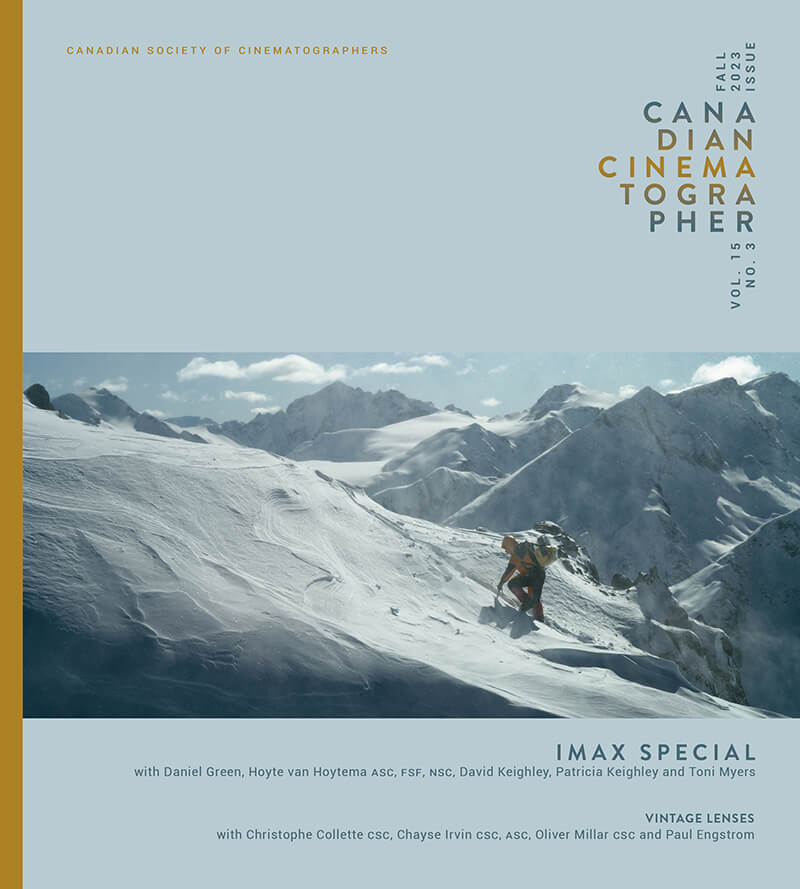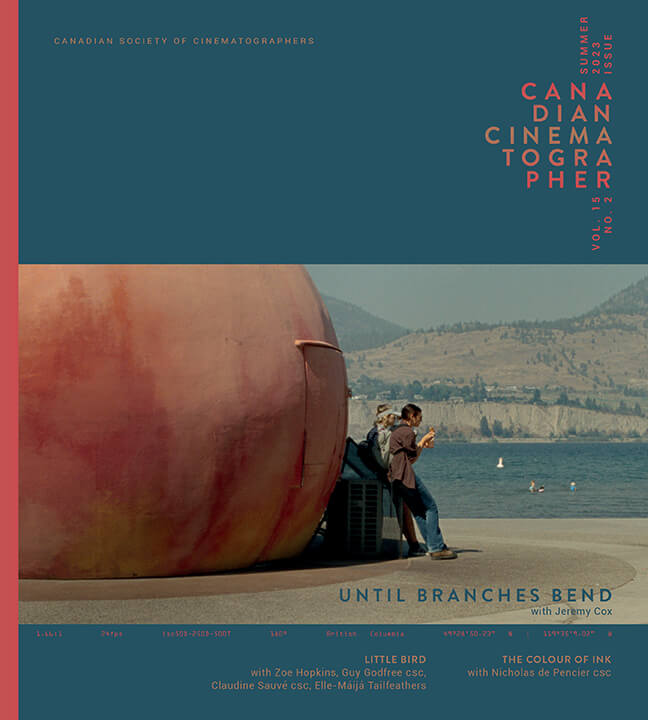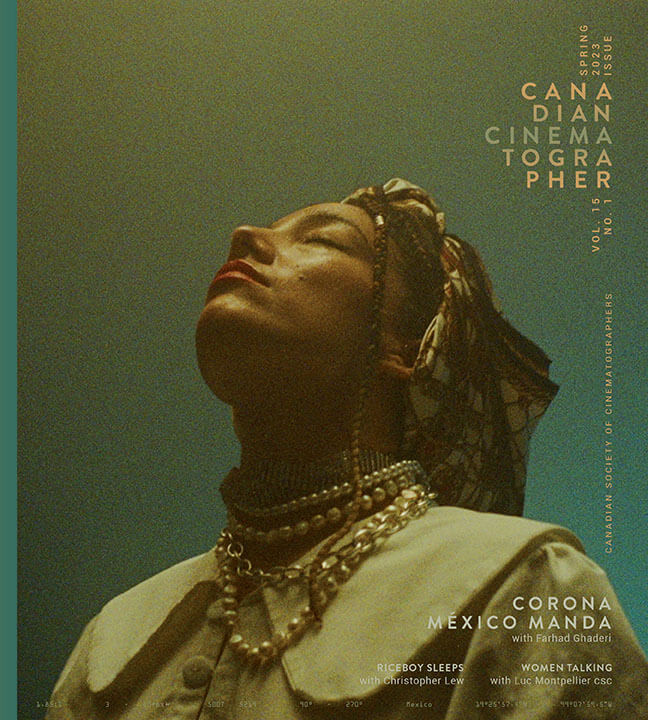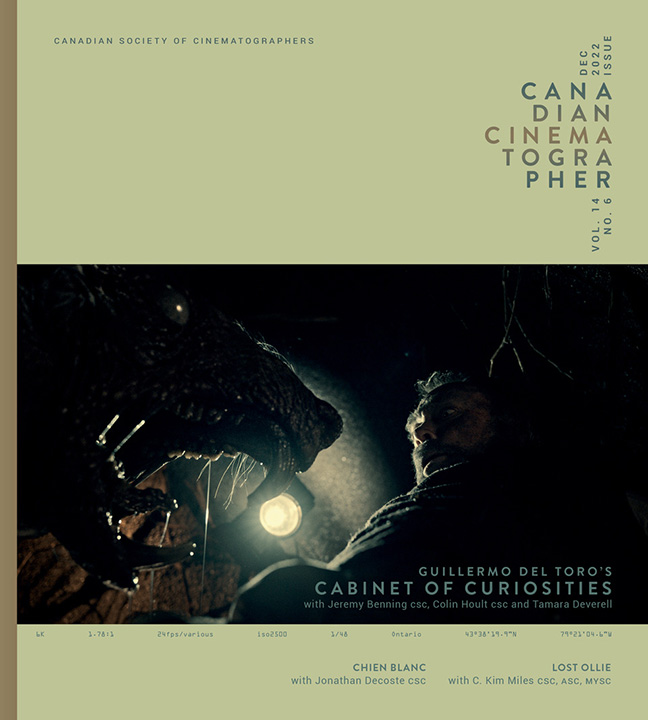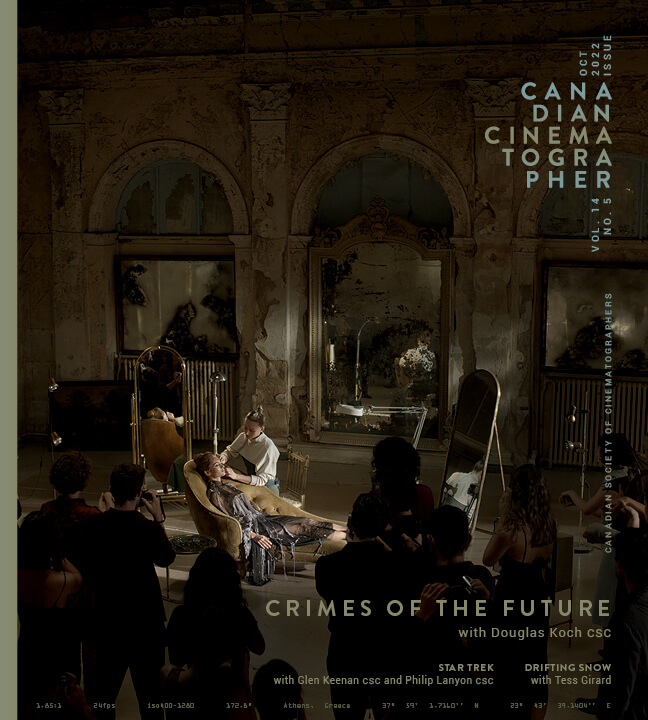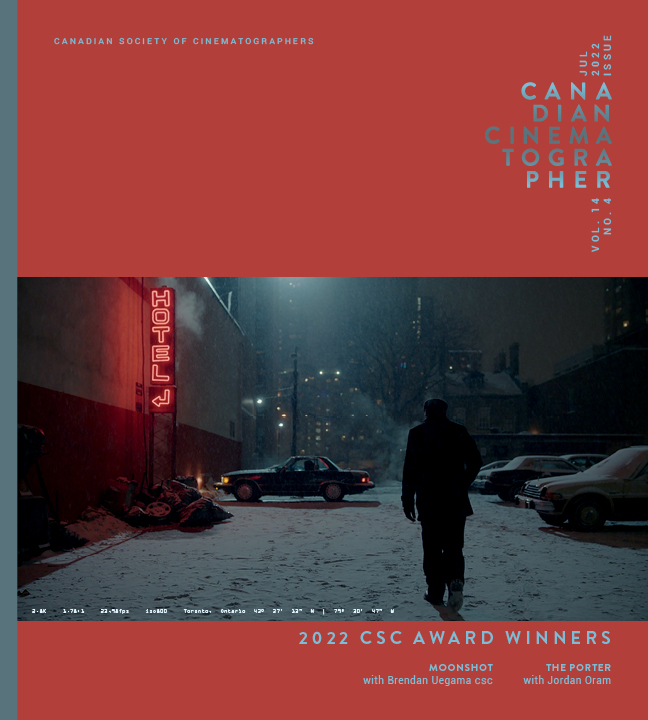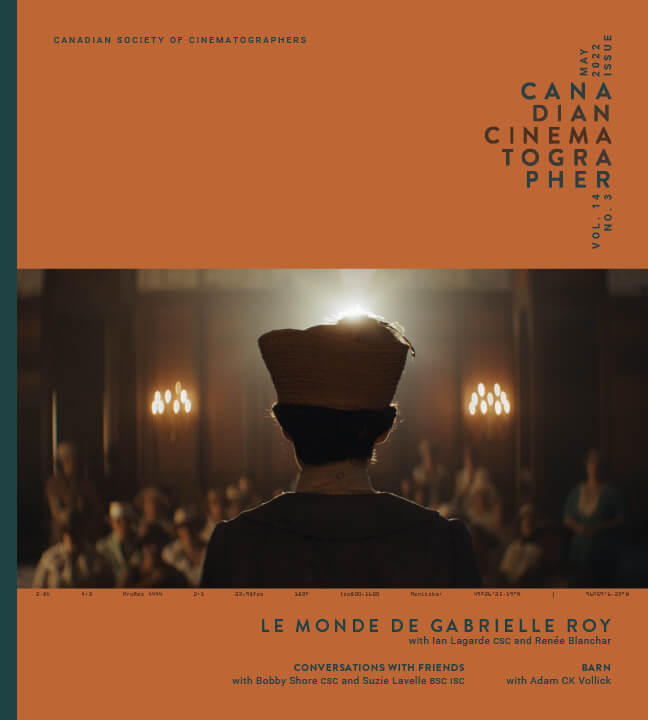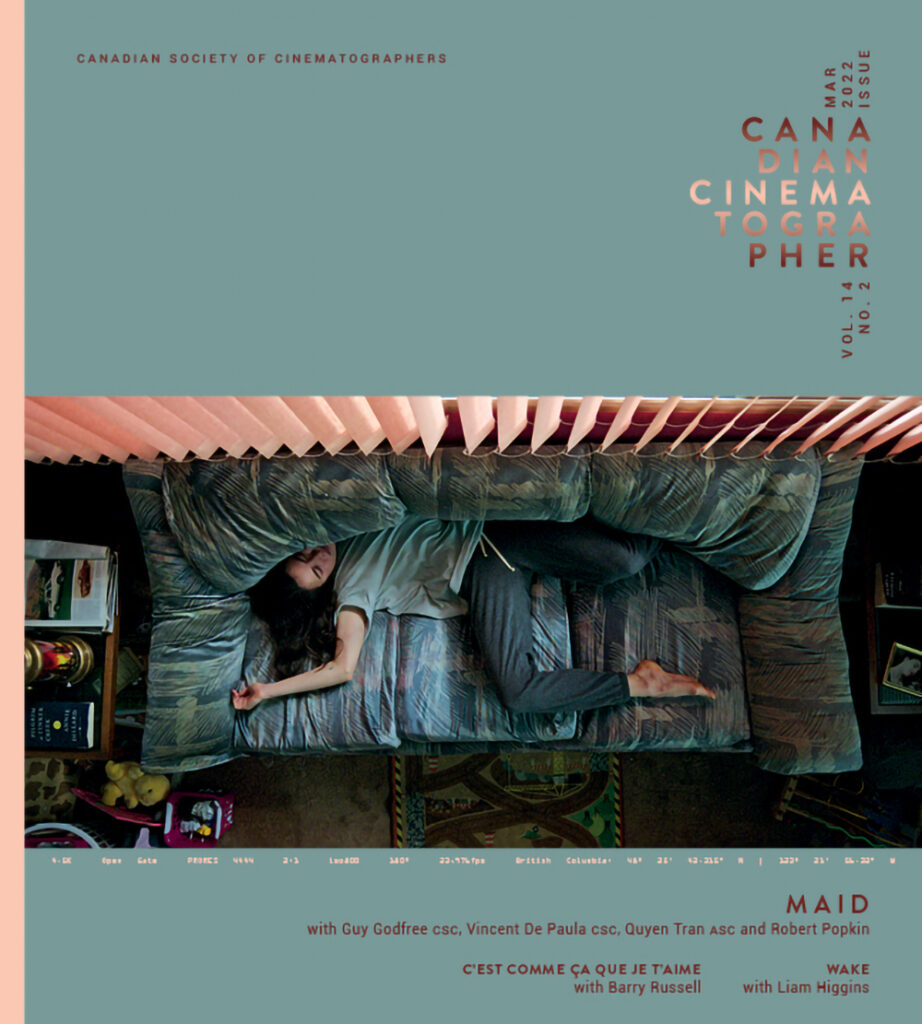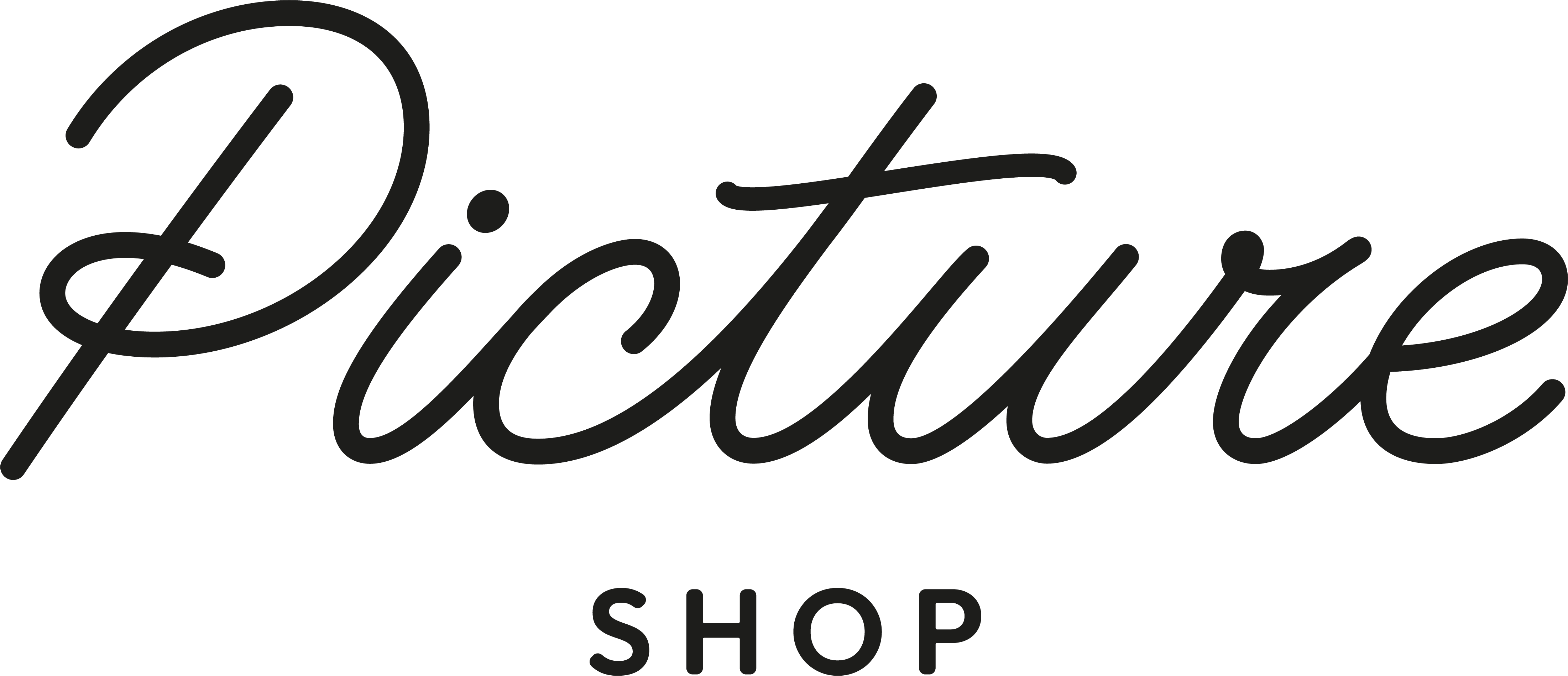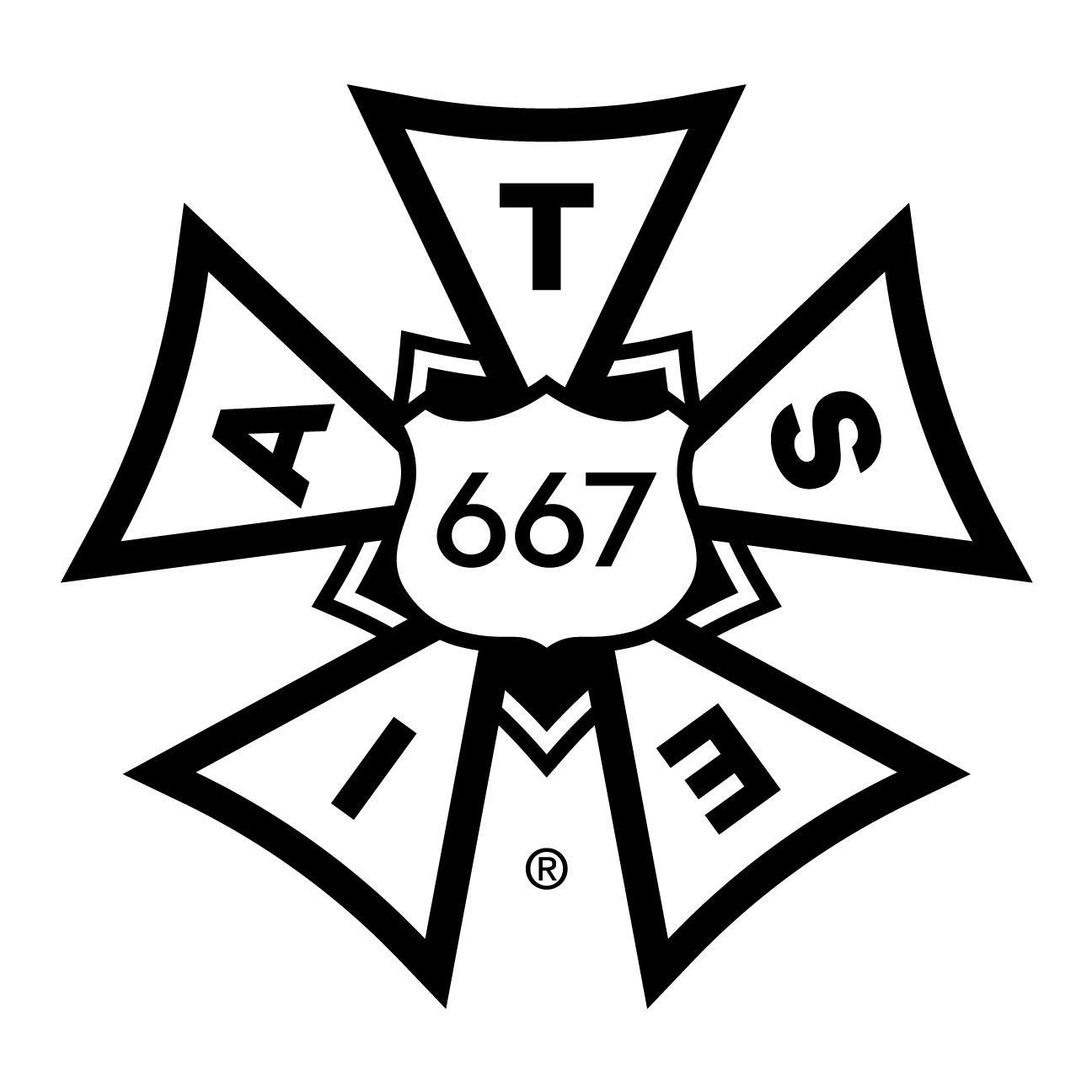
Fostering
Cinematography in Canada Since 1957
The CSC has grown with the country’s film and television industry, and continues to uphold the objectives for which the not-for-profit organization was founded.
CALENDAR | 2025 AWARDS | SUBSCRIBE
Latest News & Events
-
Congratulations to the 2025 CSC Awards Winners.
Find Out More -
CSC congratulates members whose films were selected for the 2025 Toronto International Film Festival.
Find Out More -
We are proud to announce this year’s Canadian Society of Cinematographers Special Award Recipients.
Find Out More
Scheduled Workshops
The CSC is committed to improving access to opportunity in the film and television industry as well as professional development in the form of workshops, our internship program and the Field of View Mentorship program.
Follow us on Instagram
#justinblackcsc @justinjblack
pinhole journal was a film made during covid lockdown, like many others made by isolated filmmakers expressing what we were all feeling. Sharing here because the techniques developed were useful to me in my later work, and it feels like a true expression of a period in my life.
I had just bought an Alexa Mini LF, and the week after it arrived lockdown began. This was financially concerning, but gave me something to do. I borrowed some experimental lenses from friends and started filming life with my partner and I in the 16th floor apartment we lived in at the time.
I became interested in allowing light in behind the lens and shaping it. So I found ways to rig lenses in the right position with the PL mount removed, and stuck glass objects around the air gap behind the lens to texturize the light. I often think of how we can bring cinematography closer to painting - there’s so much expression in textures that we can only gesture towards with conventional lighting and lensing. Shaping the light leaks as an integral part of the image felt aligned with that idea.
The pinhole lenses became their own format - they needed 3200EI in daylight, and inside I’d lower the framerate as needed and step print to expose. It naturally looks like digital 8mm - grainy, everything in focus but nothing sharp. One of the “lenses” had a built in turret with different pinhole sizes, and rotating it combined with the low framerate felt like the way our lives were flickering by suspended in time. I also learned that with pinhole lenses, extension tubes behave like focal length extenders, so I made some extra long ones out of tin cans to shoot telephoto from my balcony.
Music by h hunt, colour by Clinton Homuth

#justinblackcsc @justinjblack
Wilfred Buck is a feature documentary that follows the extraordinary life of Wilfred Buck, a charismatic and irreverent Cree Elder who overcame a harrowing history of displacement, racism and addiction by reclaiming ancestral star knowledge and ceremony.
Directed by Lisa Jackson and based on Wilfred’s autobiography “I Have Lived Four Lives,” the film interweaves verite, archival and re-enactments. In 2022 I was lucky to play a small part in its creation, shooting dramatized scenes from his upbringing in The Pas, Manitoba and young adult life in Winnipeg.
Lisa decided early on that we should shoot on 16mm. There was an incredible depth of archival footage from the NFB, and we wanted to make the scenes we were shooting feel like they came from the era so she could flow between them as real parts of history.
Our shooting style was informed by the 60s/70s era film and photography. We were always reaching for images that felt loose and natural, juxtaposed with graphic compositions with a pictorial, storybook quality. Though the story of his young life is one of struggle, Lisa wanted to avoid bleakness in the imagery, instead imbuing them with the vividness of memory, and we embraced the rich, saturated palette of the archival footage.
We worked with a micro crew and minimal lighting on location in The Pas, a 6hr drive from Winnipeg. Keslow provided an ARRI 416, 16mm Ultra Primes and Canon 10.6-180mm zoom. Colorlab in Maryland was our lab with a surprisingly quick turnaround time for dailies given our location, with final colour by Jim Fleming working from Urban Post.
BTS Photos by Tom Wood

#justinblackcsc @justinjblack
Lots of fun & unusual BTS in this one ! 🔊
TERMINALLY IN LOVE is a short film I shot and co-directed with Emily Jenkins, about a neurotic stoner reeling from her recent breakup. I created the concept and Emily wrote the script and played the lead. The film released in 2019, but we had been testing since 2017.
The film’s goal was to depict the character’s consciousness in first person, with an interest in nuances like how eyelashes refract light and the textures of closed eyes. But the character isn’t really paying attention to the world around her, she’s stuck in her own fantasies and dreams, which needed less literal, more emotionally driven visual choices.
This film was one of my first experiments with lensless image creation. Abstract colour sequences representing hypnagogic dreams were made with light refracting through multiple layers of moving glass on servos and sliders, captured direct to sensor.
We shot the first person segments with an Alexa Mini, 14mm Master Prime, and a Movi M15 mounted on a modified Easyrig to our body actor Maccie Paquette, the only friend we knew strong enough to carry it. Today lighter weight tools are available, but in 2018 we decided the dynamic range and wide FOV/shallow DOF of that system was necessary for the image to feel human. I operated remotely with a mimic unit mounted to a helmet for organic head motion. Syncing the head motion, body acting, focus and actor blocking meant that the first person scenes needed to be tightly choreographed. We also learned that a head height 14mm lens looks pretty awful in a lot of circumstances, so vantage points with depth drove our blocking and locations. For static shots where the Movi didn’t fit (like a shower or hammock) we hung the camera from a bungie cord.
Memory scenes were shot improvised in third person, searching for moments that felt real, with heavily fragmented editing. Dreams were theatrical expressions of the character’s ego and desires, with shifting environments and plot lines that felt true to dream logic we observed ourselves.
Full film and BTS featurette at terminallyinlove.com

#justinblackcsc @justinjblack
I shot The Hardy Boys S3 in 2022. I had done a couple youth series prior, and while looking for references for those shows I was impressed by Fraser Brown’s work on Season 1 - precise anamorphic photography and beautiful sculpted darkness. So getting the job was a big deal for me. On past shows I had intentionally evolved the look or designed it from scratch, but this time I made my goal to honour the style and keep it going (perhaps informed by a call where Fraser talked about the value of staying true to what’s established, which I think was his subtle way of saying “don’t fuck it up!”)
It was a process of finding my own balance of preserving what’s important while allowing myself to work intuitively. I started prep by thoroughly breaking down the established set lighting, and found that while I resonated with the quality of light, ratios and palette, there were some places my instincts deferred, mostly on what colours should come from where, and eventually concluded that I needed to follow that. 2nd unit or inserts can be more strict, but as a single DP on a show working instinctively is necessary - it’s the difference between intuitively knowing what to do and needing to check your notes. I think the result is a show that feels continuous but has some of me in it.
Had a great time collaborating with our directors Jason Stone, Felipe Rodriguez and Melanie Orr, all of whom brought their own distinctive voice to their episodes, & was an honour receiving a CSC award for Dramatic Series Cinematography for the show.

Since 1957, the CSC has grown from a small circle of visionaries to a vibrant community of over 800 members across the country. At the heart of the CSC is dialogue, collaboration, and the exchange of ideas - powered by committees, training, and workshops. Your involvement strengthens not only our success, but the voice of our entire community.
As we begin a new chapter, we thank Susan Saranchuk for an extraordinary 30 years of dedication, and her team, Patty Guyader, and Karen Longland for their invaluable contributions.
We’re excited to welcome our new leadership team: Executive Director of Operations, Lucy Kayumov, and Executive Director of Strategy & Vision, Byron Wong.

#justinblackcsc @justinjblack
Amaranth is an experimental film I made with composer Gayle Young.
Centred around Gayle’s improvised performance on two microtonal instruments she created, I was guided visually by the idea of a decentralized, non-anthropocentric perspective that flows between the experiential planes of insects, plants, sculptures, and hypothetical interdimensional entities, all present in the natural garden surrounding Gayle’s home. Timothy Morton’s writing on object-oriented ontology was a conceptual influence.
I used an LF sensor with S35 & S16 lenses and a front anamorphic projection adapter to create circular and ovular “aspect ratios”. Some shots used irregular sparkly mesh on the rear of the lens, creating spiderweb flares that spread smoothly beyond their frame shape. I morphed the image by rotating the anamorphic element with a focus motor - an improvised version of what is sometimes called a Mesmerizer.
A Laowa probe shot out of focus and covered in pond scum created shimmering textures that felt alien yet of the environment, punctuated by sharp perspectives of ants and inchworms. These contrasts nod to endless experiences of reality that can exist within a shared ecosystem. Shot from a Porta Jib with a Weaver 3 Axis head that a couple friends and I lugged around the garden.
I went into the shoot with some photoshopped stills as a mental reference for the final colour palette, but no shooting LUT. Our colourist @clintonhomuth explains his process to create the look: “We began by separating chroma and contrast into distinct channels, softening only the colour so it drifted beyond its contrast boundaries. The palette was reduced and rounded at its edges, while the red channel was expanded into green to blur the clarity of how the human eye perceives RGB. We shaped the image further to guide focus, pulling and pressing the contrast until it felt like another vision: not human, phenomenologically different yet still tethered to the constraints of human displays.
The film screened at Ann Arbor where it received the Kodak Cinematic Vision Award. It’s online now at justinblack.ca/amaranth

#justinblackcsc @justinjblack
REVIVAL | PT2
When we started we thought it was going to be an all location show - there was no studio. Then during prep production designer Josh Turpin suggested building a hospital set into our production office. That idea soon expanded and we took over more of the space, cutting holes into interior walls to play as exterior windows, and eventually building a police station set.
This post will focus on some of the lighting we had to improvise to make that all work.
Generally lighting an “exterior” window in studio involves pushing soft light from above to create a “sky,” hard “sunlight,” and front or back-lighting a translight (backdrop). More space is better - distance lets the drop fall naturally out of focus, high backdrops allow lower angles, and further sun sources make more parallel beams.
In our hospital room the “exterior windows” looked out into office space. If the backdrop was placed too far you quickly saw the ceiling, requiring an aggressively close ~4’ distance. We compensated by printing it heavily out of focus and putting hampshire frost on the windows. Aputure LEDs bounced cold light into the ceiling for the sky, and warm sunlight into 2x2 mirrors, flagged to isolate the colours. The drop was backlit with 4Ks. We built titan softboxes into the ceiling above the set so we could shoot our action sequences without lights on the floor.
The space we used for the police station had a large skylight, in which we rigged a softbox with skypanels and magic cloth. It was originally painted a weird pea-soup colour, which was re-painted dark grey to avoid skewing the light. We added set walls with more faux “exterior windows”, filled the ceiling with titan tubes, and peppered the set with fluorescent desk lamps.
Last images - to keep a consistent day look in a church interior through nightfall, we skinned the north side windows with half soft frost and 18Ks through each, with 4Ks into ultrabounce on the south side to block the real sun. I like half soft for this application because it picks up just enough light to sell as an overcast day outside without getting too bright, depending on your angle to the light.

#justinblackcsc @justinjblack
REVIVAL is a series I shot out in St John New Brunswick last winter, based on the comic series of the same name. It’s a “supernatural horror noir” where the dead come back to life in small town Wisconsin. This was as creatively satisfying as it was challenging - with great scripts and source material, a modest budget, exceptionally tight schedule, and a mandate for our keys to train up local crew, many of whom were on set for the first time. Our showrunners and directors were determined to push it as far as possible, and everyone involved rose to the occasion. Lots to say, so this will be broken into 2 posts.
I knew from the beginning I wanted to use a freely flowing Ronin and extremely impressionistic lenses, but that most vintage anamorphics would be too cumbersome for our schedule. Jim Teevan at Keslow recommended the Xelmus Apollos, and they were perfect - intense focus falloff and flares, yet with close focus, small size and controlled breathing, an ideal modern/vintage hybrid. There are projects where that amount of veiling glare and focus falloff would get you in trouble - really only the center of the image is sharp. But we embraced the look, and our brilliant ACs Rafi Mishan and Logan Scott made the Xelmus’ shallow stops and curved depth of field look easy (Rafi now claims he loves them).
Colourist Brett Trider and I built a green-forward show LUT that gave a stark eerieness to our base look, while still giving me freedom to use colour in lighting to differentiate our environments. In prep I made per-episode image boards with the colours of each location to ensure my mostly analogous pallet would intercut - rusty amber, rich red, ochre fluorescents, electric yellows, alongside a “neutral” of muted cyan.
More to follow!

